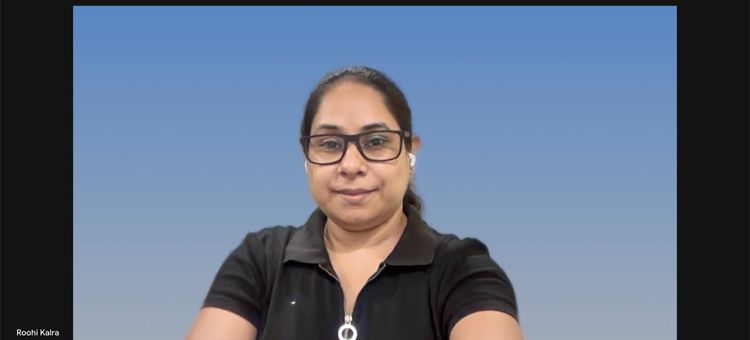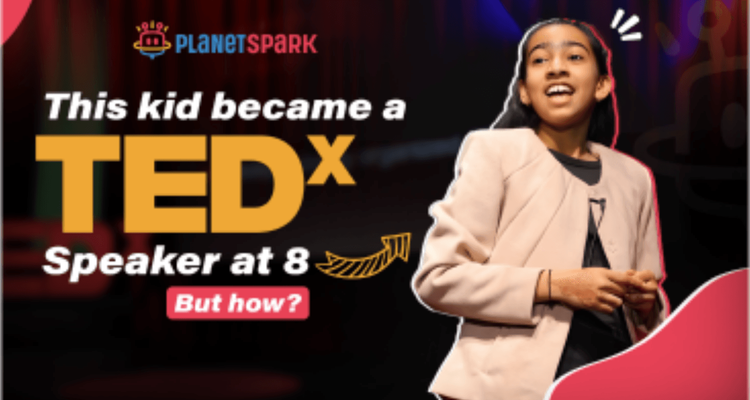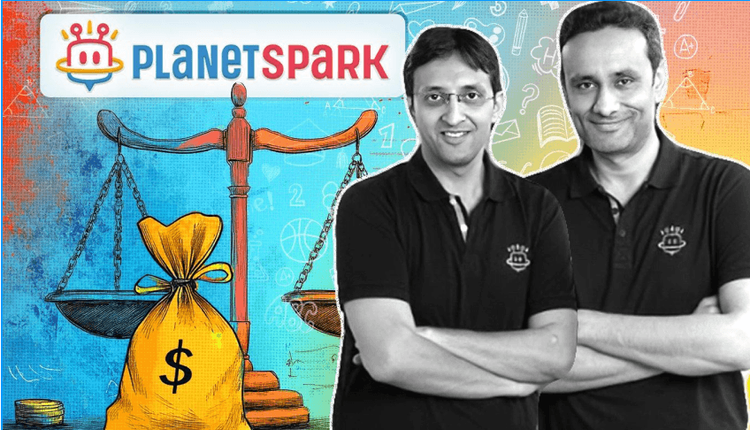
Unlock Confidence with Presentation Skills for Kids
Help your child speak fearlessly, present clearly, and engage any audience with PlanetSpark’s proven online program.
Do you know that kids who develop presentation skills for kids early are more confident in classrooms, perform better in group projects, and are more likely to take on leadership roles?
A study involving 50 sixth graders revealed that participation in classroom presentations significantly increased both engagement and creativity.
Presentation Skills for Kids
PlanetSpark’s presentation skills for kids program helps children overcome hesitation, speak with confidence, and present ideas clearly. With interactive learning, expert mentors, and engaging activities, kids build real-world communication skills that prepare them for school, competitions, and beyond.
At PlanetSpark, we believe confidence in speaking isn’t built overnight, it’s nurtured through practice, encouragement, and the courage to begin.
What Makes PlanetSpark the Right Platform for Building Presentation Skills for Kids

Expert Mentors
Trained educators guide kids with personalized attention

Fun, Interactive Learning
Engaging activities keep kids motivated and excited.

Safe & Supportive Environment
Small group and 1:1 sessions ensure children feel comfortable to express themselves without fear of judgment.

Global Exposure
Children connect with peers from across the world, learning diverse perspectives while improving presentation skills.

AI-Powered Feedback
Kids receive instant, tech-enabled feedback on tone, pace, and body language—making practice more effective.

Personalized Progress Reports
Parents get regular updates on their child’s improvement in clarity, confidence, and delivery style.
Who Is This For?
PlanetSpark’s presentation skills for kids program is designed for children who want to overcome stage fright, gain confidence, and express ideas clearly. It’s perfect for shy speakers, school presentations, competitions, and young learners aiming to build strong communication skills.
Presentation Skills for Kids: Curriculum
Learning Outcomes from Our Presentation Skills for Kids
By the end of these presentation skills classes, learners will be able to:
✔️ Speak with Confidence
Overcome stage fright and present ideas fearlessly in front of any audience.
✔️ Present with Clarity
Organize thoughts, structure content, and deliver impactful presentations.
✔️ Engage the Audience
Use voice, body language, and storytelling to capture and maintain attention.
Skills Covered
In our program, children build a strong foundation in:
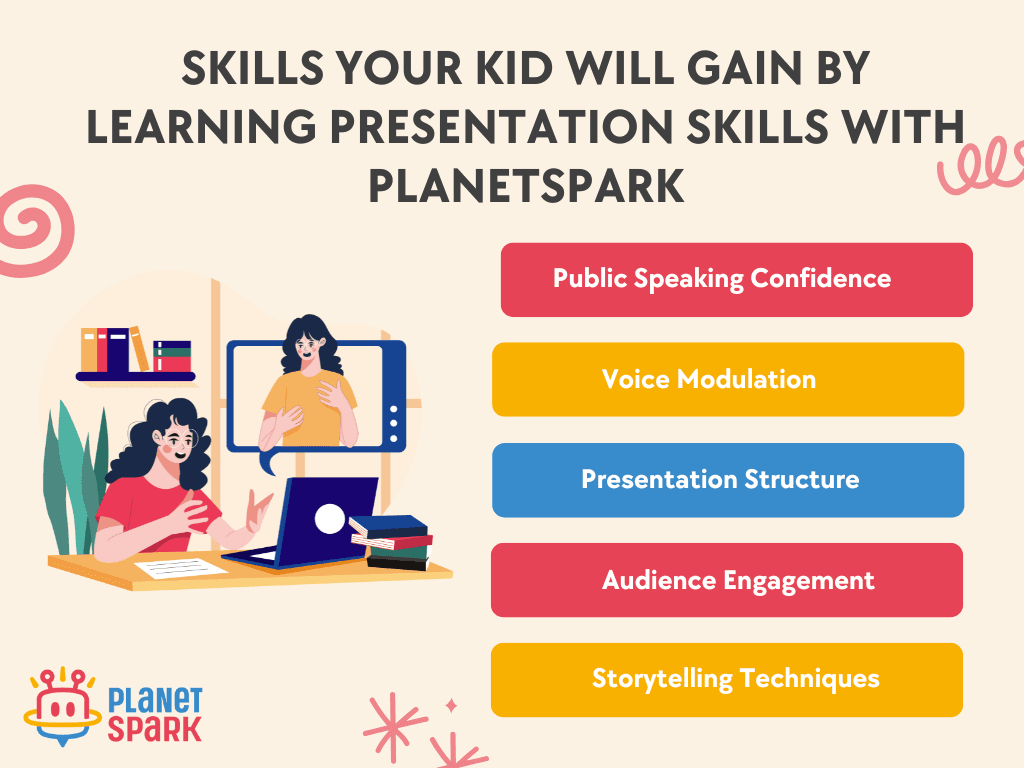
✔️ Public Speaking Confidence
Speak fearlessly in front of any audience.
✔️ Voice Modulation
Use tone, pace, and volume effectively.
✔️ Presentation Structure
Organize ideas clearly for maximum impact.
✔️ Audience Engagement
Capture and maintain the audience’s attention.
✔️ Storytelling Techniques
Make presentations creative and memorable.
The Learning Journey: Step-by-Step Growth
Our Presentation Skills for Kids program is designed as a guided journey where learners grow with each stage:
✔️ Foundation Stage – Building Comfort
Learners start by overcoming hesitation, practicing introductions, and developing the courage to speak in front of peers.
✔️ Development Stage – Structuring Ideas
Children learn to organize thoughts, use presentation frameworks, and practice clarity in delivery.
✔️ Expression Stage – Enhancing Delivery
With focus on voice modulation, gestures, and body language, learners bring life to their presentations.
✔️ Engagement Stage – Connecting with the Audience
Through storytelling, interaction, and creative techniques, kids learn how to hold attention and make presentations memorable.
✔️ Mastery Stage – Confident Presentation
Learners combine all skills to deliver impactful presentations in front of groups, building confidence that extends beyond the classroom.
Meet Our Star Tutors
Top 1% certified experts who make learning engaging and impactful
It’s Normal to Hesitate, But You’re in Safe Hands

Learning to present confidently can feel daunting, and hesitation is completely normal. That’s why our presentation skill for kids program is designed to make every learner feel comfortable from day one.
At PlanetSpark, we’ve already guided 90,000+ learners, delivered 1M+ hours of learning, and served students across 30+ countries. With personalized guidance, expert mentors, and a proven curriculum, every child grows at their own pace, building not just confidence, but long-lasting presentation skills that help them shine in school and beyond.
Benefits of Attending A Free Demo Class
Try before you decide — join our free demo and get vocabulary tips, fluency practice, and a confidence boost for free.
Certificate of Participation
Your child earns a certificate after a 1-hour live session.
AI-Powered Performance Report
Get insights on strengths and areas that need improvement.
Personal Counselling by Experts
Receive detailed feedback and guidance tailored to your child.
The PlanetSpark Superstars!
Nurturing confident young minds and inspiring future achievers through presentation skills for kids program.
Real-World Benefits of Presentation Skill for Kids
Our program goes beyond the classroom to prepare learners for real-life success. By mastering presentation skills, kids gain:
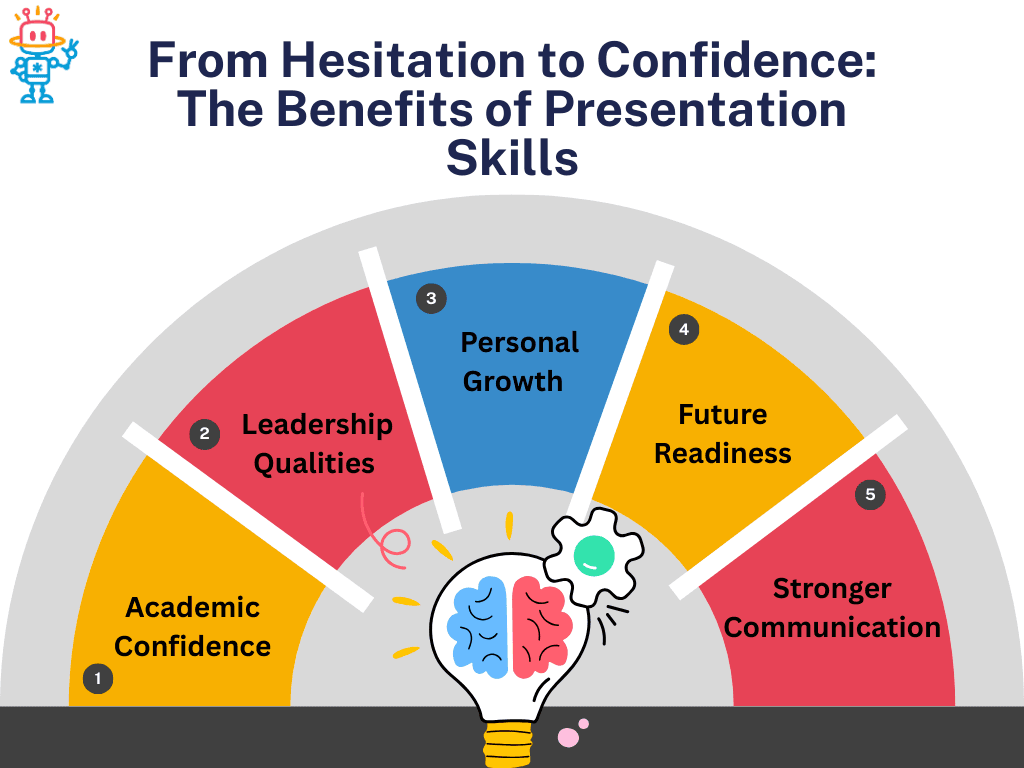
✔️ Academic Confidence – Present projects, assignments, and ideas clearly in school.
✔️ Leadership Qualities – Take initiative in group activities, debates, and competitions.
✔️ Stronger Communication – Express thoughts effectively in conversations and discussions.
✔️ Future Readiness – Build a foundation for interviews, public speaking, and professional success.
✔️ Personal Growth – Develop self-assurance that reflects in every aspect of life.
Learn Anytime with Our AI Coach
Building presentation skills doesn’t stop when class ends. With PlanetSpark’s AI Coach, learners can practice anytime, anywhere, beyond classroom hours.
Deliver Speeches & Narrate Stories – Keep improving outside the class.
Respond to Prompts – Practice speaking freely whenever you want.
Instant Feedback – Correct pronunciation, grammar, and fluency on the spot.
Track Progress – See clear growth between live sessions.
Flexible Practice – Learn and speak at your own pace, on your own time.
This AI-powered coach makes learning continuous, ensuring children gain confidence by practicing presentation skills beyond the classroom, whenever they choose.
Making Headlines Nationwide
Featured in leading media for transforming young learners into confident, creative, and future-ready achievers through helping learners with presentation skills.
Frequently Asked Questions
Through live classes, interactive activities, and personalized feedback, PlanetSpark helps children practice speaking, storytelling, and audience engagement step by step.
Presentation skills help kids build confidence, organize ideas, and express themselves clearly. At PlanetSpark, our program ensures children learn these skills in a fun and interactive way.
Unlike recorded lessons, PlanetSpark offers live, mentor-led sessions where kids actively practice, overcome hesitation, and gain real-time guidance.
By completing the course, children confidently deliver structured presentations, engage audiences effectively, and carry forward communication skills that support both academics and future success.
Unlike pre-recorded lessons, PlanetSpark offers live sessions where kids actively practice presentation skills for kids, get real-time feedback, and gradually overcome hesitation.

Hi There, want to try these
tips for your child with
LIVE with our expert coach?
Let's check your child's
English fluency




